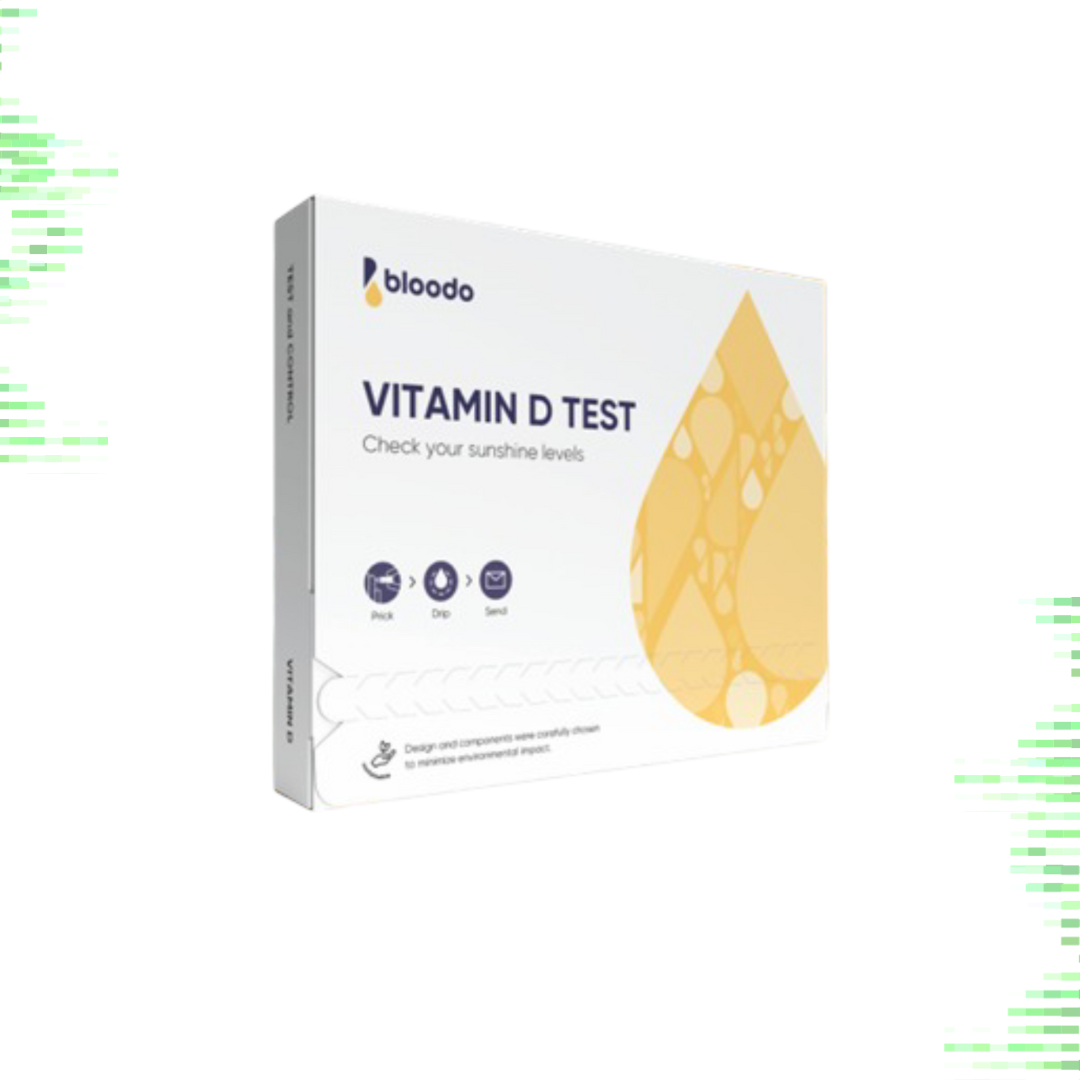
How It Works
Order Your Kit
Get your test kit delivered directly to your door with fast, secure shipping.
Collect Your Sample
Use our easy, pain-free finger-prick method to collect your sample at home.
Ship to Our Lab
Send the sample to our certified laboratory for comprehensive analysis.
Get Your Results
Access your personalized insights and recommendations online within 2 weeks.
What It Measures
NAD (nicotinamide adenine dinucleotide) is a key molecule for energy, aging, and mental clarity. Our NAD Level Test measures total NAD⁺ and NADH in your blood, giving you insight into your cellular health.
- Monitors aging process
- Evaluates energy & performance
- Tracks cellular regeneration
- Supports longevity goals
How Our Test Works
Your health is our priority At Bloodo,
we’re more than just a health company. We're passionate about giving you the power to understand your health on a deeper level. Our convenient at-home blood sample collection kits, like our NAD Level Test, Omega Ratio Test, Vitamin D and HbA1c tests, put advanced technology right in your hands. We don't just send results; we provide insights at the cellular level, empowering you to make informed choices about your well-being. We believe that understanding your health shouldn't be complicated. That's why we're with you every step of the way, offering resources and knowledge to guide you on your journey. Your health is your most valuable asset – let us help you protect it.
Advanced health insights from the comfort of home
At Bloodo, we're more than just a health company. We're your partners in achieving optimal wellness through cutting-edge technology and personalized insights that empower you to make informed decisions about your health.
- Molecular-level insights
- Convenience and simplicity
- Enhanced stability
- Safety

Key testing data of the BloodoTM Vitamin D Test
1. Calibration and linearity
Vitamin D3 and D2 is measured according to a calibration curvereceived against the added Vitamin D3 and D2 standards in real human blood (Figure 1 and Figure 2). A typical calibration curve is conducted using Vitamin D3and D2 concentration range of 6.2 - 250 nmol/l (accounting for dilution), enabling the determination of Vitamin D3 and D2 in DBS samples within this range. Acceptance criteria for error margin is < 60 %. Error margin of the BloodoTM Vitamin D Test for Vitamin D3 is 25 % and for Vitamin D2 – 33 %.
2. BloodoTM Vitamin D test limit of detection and limit of quantification
Limit of detection (LOD) is the lowest amount of analyte which can be detected, but not necessarily quantitated. The limit of quantification (LOQ) is the lowest concentration of an analyte in a sample that can be quantitatively determined with suitable precision and accuracy. LOD and LOQ for the vitamin D3 and D2 were determined from the linearity experiment results. The limit of detection and limit of quantification of the BloodoTM Vitamin D Test for vitamin D3 is 14.2 nmol/l and 23.6 nmol/l, respectively, for DBS samples (whole human blood). The limit of detection and limit of quantification of the BloodoTM Vitamin D Test for vitamin D2 is 16 nmol/l and 26.6 nmol/l, respectively, for DBS samples (whole human blood).
3. Specificity
Specificity is the ability of the assay to unequivocally assess the analyte in the presence of components that may be expected to be present. The characteristics of an LC-MS method impart remarkably high specificity for Vitamin D determination. High-performance liquid chromatography offers fast end effective initial separation of Vitamin D metabolites from the potentially interfering matrix components, reducing the complexity of analyte presentation to the mass spectrometer. Subsequently, mass spectrometry provides discriminatory power by filtering, detecting and quantifying molecules based on their parent ion distinctive mass-to-charge ratios (m/z). Moreover, tandem mass spectrometry (MS/MS), employing techniques like multiple reaction monitoring (MRM), enables fragmentation of the parent ion of Vitamin D metabolites and monitoring of highly specific product ions at different collision energies, further enhancing the method's specificity and minimizing the risk of misidentification. An additional check of product ion abundance ratio is performed to further decrease a risk of misidentification, providing a yet another criterion to ensure unparallel specificity and discrimination of matrix effects.
Results & Interpretation
Your results are delivered online within 10–14 days.
You’ll receive a personalized dashboard showing your NAD concentration (µmol/L), along with insights about optimal ranges, improvement recommendations, and supplement compatibility.





